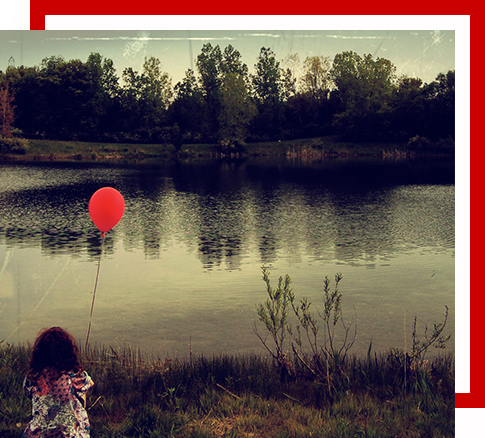Do Children Today Worry Too Much?
 What are we doing to our young people? This is the best time in human history to be alive, and the future offers such amazing potential. Yet they are constantly overwhelmed with how difficult the world up ahead might be. If we continue to unbalance their collective daily narrative with so many negative reports, children will lose hope for a viable future.
What are we doing to our young people? This is the best time in human history to be alive, and the future offers such amazing potential. Yet they are constantly overwhelmed with how difficult the world up ahead might be. If we continue to unbalance their collective daily narrative with so many negative reports, children will lose hope for a viable future.
After a recent terrorist attack on distant shores, the concerned teachers in one outstanding school noted the heightened anxiety rates in their students. Lunchtime discussion amongst the children was peppered with references to the perceived dangers in the world today. The children were obviously concerned. Yet we need to ask: Is this degree of worry fully justified?
Let’s ask this question another way. Does all news – whether it’s mass media, social media, and especially ‘fake’ news – offer an honest and balanced perspective on what happens around the world each day? I don’t believe that it does, and I have explained this in more detail in The Next Generation. Consider what regularly shapes their thinking. Over 90 per cent of news coverage is basically negative, accompanied by suitably sombre or dramatic music that generates unease or even fear in viewers.
This does not reflect everyday reality. Most daily events are constructive, and invariably make a reasonable contribution to the planet’s welfare. It’s likely that 90% of all events each day are essentially routine and even positive, although you wouldn’t believe that if you watched the evening news. Is it any wonder that young people think that the world is in big trouble?
Perhaps the fault lies not just in the sensationalist global reporting, but also in ourselves. French philosopher Anaïs Nin once wrote, ‘We don’t see the world as it is. We see it as we are.’ When someone sees the worst in everything, this may not be a reflection of the world around them. It may also be a reflection of their inner world.
It’s probably time to reprogram our amygdalae. These two almond-shaped sets of neurons in our brain react to circumstances that are dangerous, rather than to ones that are safe and positive. In our distant past, this kept us cautious and alive. For most of us, today’s risks are less dramatic. The dilemma is that our amygdalae fuel a negativity bias that compels us to pay more attention to what is going badly than to what is going well.
This negativity bias has led to a perverse consequence: the better that things get, the worse we think they are. Gregg Easterbrook wrote about this dilemma in The Progress Paradox, in which he documented two competing influences. One is the unrelenting improvement in many worldwide indicators of life quality; the second is our steadily diminishing level of happiness and perceived wellbeing over the past 50 years. Too many of us are choosing — or have been convinced — to believe that the world is not a good place, and are less happy as a result.
The future for our children is meant to be a promise, not a threat. For their sake, let’s set the record straight. Most indicators (although not all) clearly show that the standard of living has improved dramatically for many people around the world in the past five decades. In most countries (although not all), the population is wealthier, healthier, richer, and yes, even much safer than at any previous time in human history. But it’s certainly not perfect.
If you are a pessimist looking for evidence that the world is in trouble, you will find plenty to justify your personal belief. Terrorist threats, global warming, refugee resettlement, youth underemployment, worldwide economic debt, and the increasing divide between rich and poor are probably never far from your mind . . . and they’re only the long-term concerns. If you only focus on those issues, then you probably do lots of worrying.
Here’s the counterpoint. Billions of people every day engage in work projects and daily experiences that steadily create a better world for all of us. If Boyan Slat is any indication, our Next Generation will rise to that promise. This young Dutch entrepreneur is part of the new cohort determined to create that better world. While he was still a teenager, Slat launched the Ocean Cleanup project, which has been dubbed the largest cleanup in history. His astounding proposal? That up to 40 per cent of all rubbish in the world’s oceans be removed within 10 years.
 This is no small ambition. About 8 million tonnes of plastic enters our oceans every year, and the cost of conventional removal methods is prohibitive. Slat asked, Why move through the ocean with a cleanup, when the ocean can move through you? His ingenious system relies on the ocean’s currents collecting the debris inside what is called an Ocean Cleanup Array. Much of the oceans’ rubbish presently accumulates in five ocean garbage patches around the world. In 2017, the first pilot installation of an array became operational in the largest of them all — the Great Pacific Garbage Patch between Hawaii and California.
This is no small ambition. About 8 million tonnes of plastic enters our oceans every year, and the cost of conventional removal methods is prohibitive. Slat asked, Why move through the ocean with a cleanup, when the ocean can move through you? His ingenious system relies on the ocean’s currents collecting the debris inside what is called an Ocean Cleanup Array. Much of the oceans’ rubbish presently accumulates in five ocean garbage patches around the world. In 2017, the first pilot installation of an array became operational in the largest of them all — the Great Pacific Garbage Patch between Hawaii and California.
Boyan Slat is just one of millions of energetic young entrepreneurs determined to make the world an even better place. Around 35 per cent of the world’s population is under 20 years old. Nearly 90 per cent of these under-20s live in emerging countries in Africa, the Middle East, South America and Asia. Their unprecedented entrepreneurial involvement will unleash one of the greatest economic and social evolutions in human history.
Given these pending evolutions, will our children’s future be profoundly optimistic? Probably not. Will it be deeply pessimistic? That’s equally improbable. The world up ahead will most likely be a beautiful mess. It has always been so, and it always will be. So whose predictions are more valid, the optimists’ or the pessimists’? Given that optimists invented the aeroplane and pessimists invented the parachute, both perspectives are useful.
There is another, more attractive perspective, though. Realistic optimism is a healthy balance between the two opposites. Think of people who keep an open mind to all possibilities while still applying a healthy degree of scepticism in their thinking. The future needs lots of these realistic optimists more than it does those at either end of the spectrum.
So what can we do for the children who constantly worry and too quickly become junior pessimists? There is no quick-fix to such a complex issue, although one critical issue is to clarify who influences their beliefs about the future. Let’s start with their teachers and parents.
We need realistic optimists everywhere in education and parenting. A rampant optimist probably just gives a false impression to children – after all, young people know that the world is not perfect. However, pessimistic adults who believe that the future is doomed, and convince their children accordingly, are perhaps not the best for the future welfare of children. Our kids today need inspiring rolemodels who believe in a realistic future world, and who can show them how to steadily create it.

